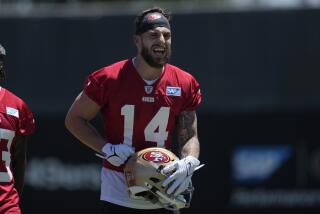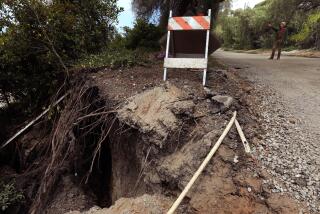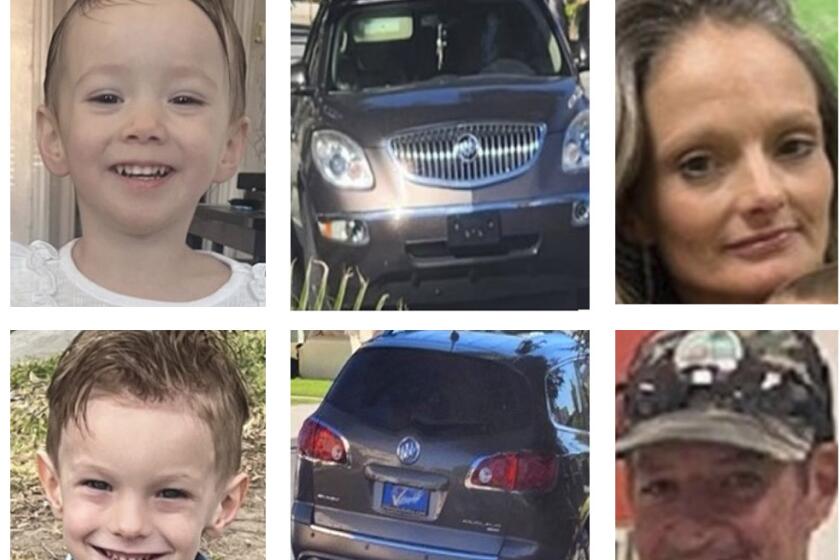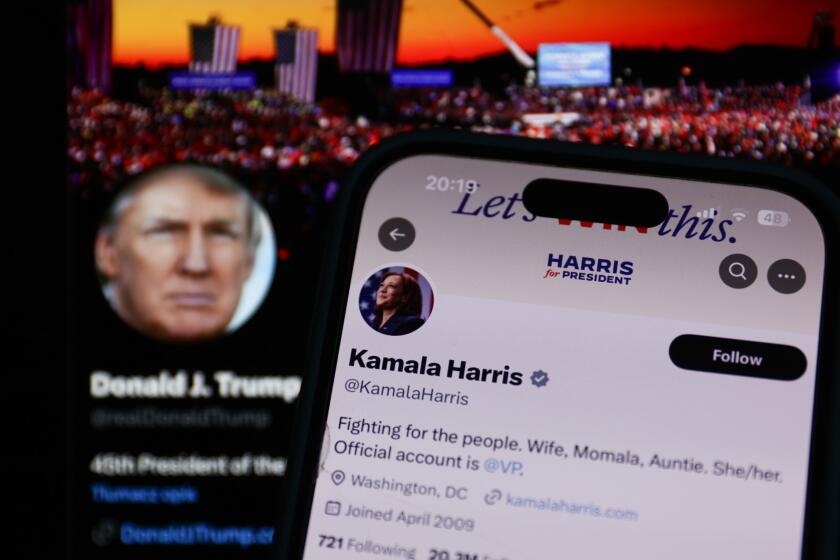Churches Reach Out to Asian-Americans : Religion: Congregations offer English services but retain cultural identity.
As Sandy Lee grew up, she attended a church in Torrance where the preaching was in Chinese followed by a translation into English. But when she was invited to the Chinese Presbyterian Church of Orange County, where services are in English and most members are American-born Chinese, she felt more at home.
“I liked it all being in English,” said Lee, 29. “I felt part of the church right away.”
The church was started by the True Light Chinese Presbyterian Church in Los Angeles, a unique congregation that religious officials across the country are watching as a model for communities in which immigration and assimilation are changing the complexion and patterns of Asian-American churchgoing.
True Light is believed to be the only Chinese church in the nation that has a program to reach second- and third-generation American-born, English-speaking Chinese who want to preserve their cultural identity but who prefer “Americanized” services and programs.
“True Light is a prototype for America,” said Tom Steers, the national coordinator for Asian-American ministries of the Navigators, a para-church evangelism and discipleship group based in Colorado Springs, Colo. “It’s avidly trying to stay relevant with ongoing generations that are not fond of predominantly overseas-born leadership or of traveling downtown” to church.
True Light has reached out from its downtown base in Lincoln Heights to found English-speaking Chinese congregations in Canoga Park, Huntington Beach and Torrance.
But some Asian-Americans say that, innovative as True Light is, its approach is already out of date.
The Rev. Ken Fong, pastor of church growth at Evergreen Baptist Church in Rosemead, is pioneering a congregation filled with Asian-Americans of all nationalities. Most of the 900 members are young, third- and fourth-generation American-born, and cannot speak a word of their ancestral languages.
Many are married to Asian-Americans of other nationalities or to whites and are part of a growing subculture whose members consider themselves Asian only in a general, nonspecific way and do not identify with any one Asian nationality.
“Our style . . . is blending Asian people,” Fong said. “Our church appeals to the more Americanized Asians who wouldn’t set foot in the immigrant-influenced churches.”
His congregation, affiliated with the American Baptist denomination, is about 40% American-born Chinese, 40% Japanese-Americans and 10% Americans of Korean, Vietnamese, Indonesian, Thai and Filipino descent. The remaining 10% are white, black and Latino. The average age of members is about 32.
Daryl Mashita, 23, said Evergreen appeals to him because “second- and third- generation Asians like to mix with Asians of all ethnicities.”
Although they have “become Americanized, are bicultural and pretty much have the same values, we still look Asian, so we don’t assimilate into the larger Western culture as fully as, for example, a second-generation German,” said Mashita, who is Japanese-American.
Evergreen is at the heart of explosive Asian growth: The number of Asians and Asian-Americans in Rosemead increased by 371% between 1980 and 1990, according to U.S. Census figures. Overall during the 1980s, the Asian and Asian-American population in Los Angeles County surged by 119% and in Orange County by 177%.
At True Light, the strategy of concentrating specifically on Chinese-Americans rather than on all Asian-Americans has worked well. The congregation is about 90% Chinese with a sprinkling of other races, mostly because of intermarriages.
“Our strategy is to plant daughter churches every five years,” said the Rev. Peter S.H. Lai, True Light’s senior pastor.
Only English is spoken at the daughter churches, which have been started where True Light members have eventually settled.
For Karen Wong, 29, who grew up at True Light, the Orange County congregation now “fills a special niche.”
“Especially for me, here in Orange County where there is not as large a Chinese population as in the San Gabriel Valley or Los Angeles,” she said, “it makes it easier to enjoy the culture of the people of my type in the community where I live.”
Each daughter church originated among families of the Los Angeles congregation.
The Rev. Phillip Y. Lee, 80, originated the daughter-church idea and is founding pastor of the Torrance church. He has twice been pastor of the downtown True Light congregation.
At the mother church in Lincoln Heights, Lai conducts the Sunday Cantonese-language service while associate pastor David Woo usually handles two services in English.
Until a few years ago, all services were in Chinese, with translators rendering the message in English. But that did not work well for either language group, and younger members started dropping out.
Now, with two tracks--one for English-speaking, American-born Chinese and the other for Cantonese- and Mandarin-speaking, overseas-born Chinese--Woo expects both groups to grow. New immigrants tend to settle in and around Chinatown and look for a nearby church where their language is spoken, and many find their way to True Light, he said.
While Lai will stay at True Light, Woo will move next January to St. James Presbyterian Church in San Gabriel--perhaps with up to half of True Light’s English-speaking members.
In another novel move, the 450-member parent church hopes that half its English-speaking members will unite with that dying white church.
Merging with the white church provides True Light an established place to expand its ministry. And St. James has a chance to stay alive.
“We have a mission now,” said the Rev. Jeffrey M. Powell, pastor of St. James, which will acquire an as yet unchosen name with the merger. His congregation, which had 700 members in its heyday, now musters about 70 people on a good Sunday. Their median age is over 70, Powell said.
St. James is typical of many predominantly white churches that are aging and dwindling in a changing neighborhood. While the white population of San Gabriel declined 28% during the past decade, the number of Asians and Asian-Americans shot up by 372%.
Both congregations are cautious as the merger approaches.
“It’s scary--and risky,” said Woo. “I keep wondering, will enough people go . . . will enough people stay? Can we support the work in both places?”
Executives at Presbyterian headquarters in Louisville say the True Light-St. James experiment is worth the risk. The national church is footing the bill for part of the project.
“I think this is going to benefit both the ongoing Anglo congregation and the Chinese people,” said the Rev. Sun Chi Wang, coordinator of Asian Congregational Enhancement for the Presbyterian Church (U.S.A.). “It will help them know and learn from each other.”
More to Read
Sign up for Essential California
The most important California stories and recommendations in your inbox every morning.
You may occasionally receive promotional content from the Los Angeles Times.





